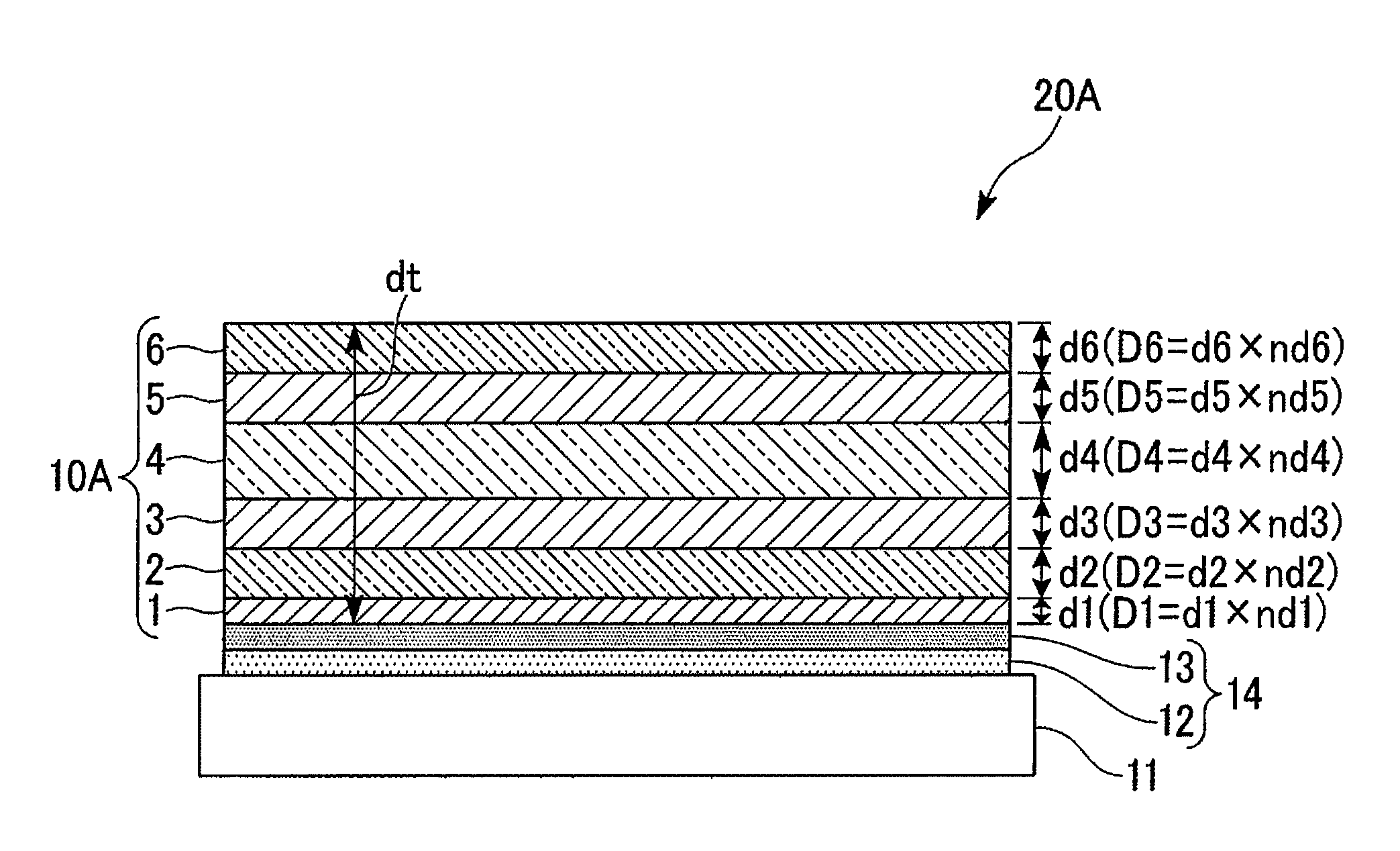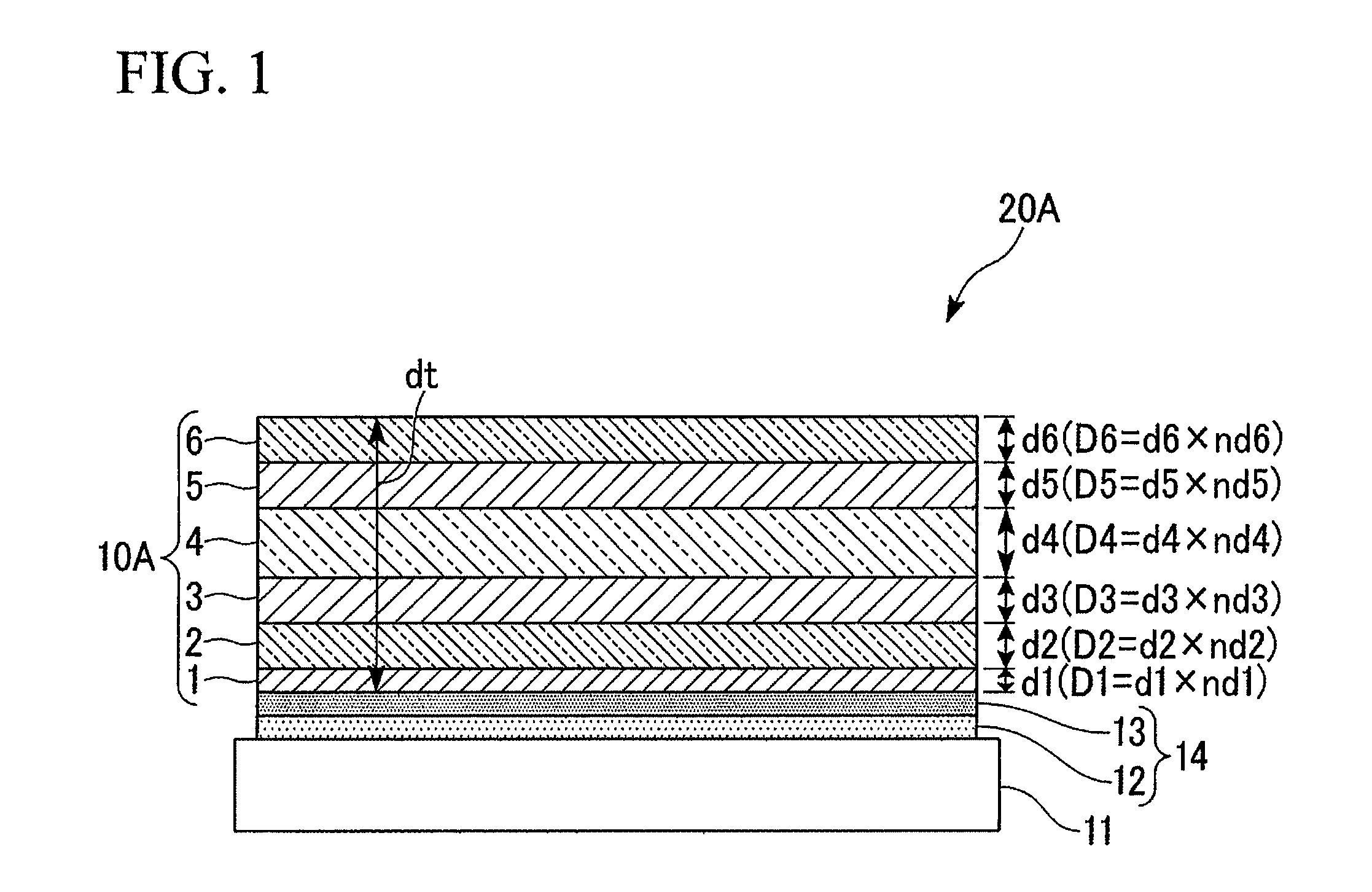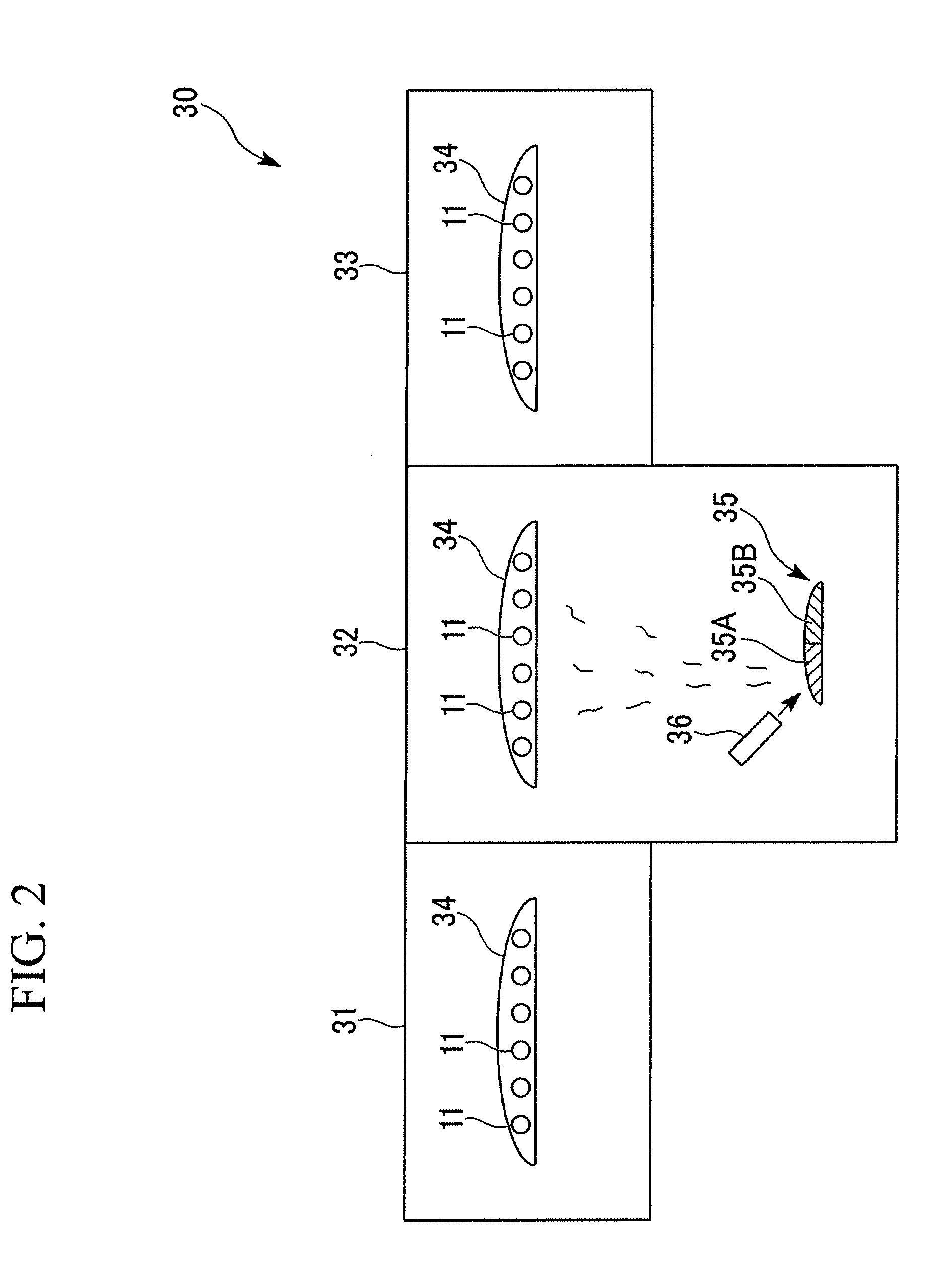Optical component and method for manufacturing the same
a technology of optical components and components, applied in the field of optical components, can solve the problems of compromising heat resistance, compromising adhesion, and difficulty in obtaining anti-reflection films having satisfactory physical properties with these related art techniques, and achieve the effect of preventing performance degradation of optical components
- Summary
- Abstract
- Description
- Claims
- Application Information
AI Technical Summary
Benefits of technology
Problems solved by technology
Method used
Image
Examples
first embodiment
(First Embodiment)
[0024]A first embodiment will be described. FIG. 1 schematically illustrates an exemplary optical component 20A according to the first embodiment. In the present embodiment, the optical component 20A is, for example, a spectacle lens.
[0025]As illustrated in FIG. 1, the optical component 20A includes a plastic substrate 11 and an antireflection film 10A deposited on the substrate 11. In the present embodiment, an intermediate layer 14 is disposed between a surface of the substrate 11 and the antireflection film 10A. In the present embodiment, the intermediate layer 14 includes a primer layer 12 and a hard-coat layer 13.
[0026]In the following description, the layer 14 and the film 10A deposited on the surface of the substrate 11 will be described mainly. In practice, a layer and a film are similar to the layer 14 and the film 10A respectively deposited on the surface are deposited on a back surface of the substrate 11.
[0027]The substrate 11 is illustrated as a planar...
second embodiment
(Second Embodiment)
[0058]Next, a second embodiment will be described. In the following description, components the same as or similar to those of the foregoing embodiment will be denoted by the same reference numerals and description thereof will be simplified or even omitted.
[0059]FIG. 3 schematically illustrates an optical component 20B according to the second embodiment. An antireflection film 10B of the optical component 20B illustrated in FIG. 3 is a multilayer film having eight layers.
[0060]In the present embodiment, the first layer 1, the third layer 3, the fifth layer 5 and the seventh layer 7 are high refractive index layers which is a ZrO2 layer. The second layer 2, the fourth layer 4, the sixth layer 6 and the eighth layer 8 are low refractive index layers which is a SiO2 layer. That is, the first layer 1 of the antireflection film 10B deposited closest to the substrate 11 is a high refractive index layer and the eighth layer 8 of antireflection film 10B deposited furthes...
third embodiment
(Third Embodiment)
[0064]Next, a third embodiment will be described. In the following description, components that are the same as or similar to those of the foregoing embodiment will be denoted by the same reference numerals and description thereof will be simplified or even omitted.
[0065]FIG. 4 schematically illustrates an exemplary optical component 20C according to the third embodiment. As illustrated in FIG. 4, the optical component 20C includes a water-oil-repelling film 9 which covers the antireflection film 10B. A configuration the optical component 20C is the same as that of the optical component 20B according to the second embodiment except that the water-oil-repelling film 9 is provided. The water-oil-repelling film 9 covers the eighth layer 8. The water-oil-repelling film 9 is deposited on an outermost layer of the antireflection film 10B which is deposited furthest from the substrate 11.
[0066]The water-oil-repelling film 9 includes, for example, a fluorine-substituted al...
PUM
| Property | Measurement | Unit |
|---|---|---|
| wavelength | aaaaa | aaaaa |
| total physical thickness dt | aaaaa | aaaaa |
| refractive index | aaaaa | aaaaa |
Abstract
Description
Claims
Application Information
 Login to View More
Login to View More - R&D
- Intellectual Property
- Life Sciences
- Materials
- Tech Scout
- Unparalleled Data Quality
- Higher Quality Content
- 60% Fewer Hallucinations
Browse by: Latest US Patents, China's latest patents, Technical Efficacy Thesaurus, Application Domain, Technology Topic, Popular Technical Reports.
© 2025 PatSnap. All rights reserved.Legal|Privacy policy|Modern Slavery Act Transparency Statement|Sitemap|About US| Contact US: help@patsnap.com



